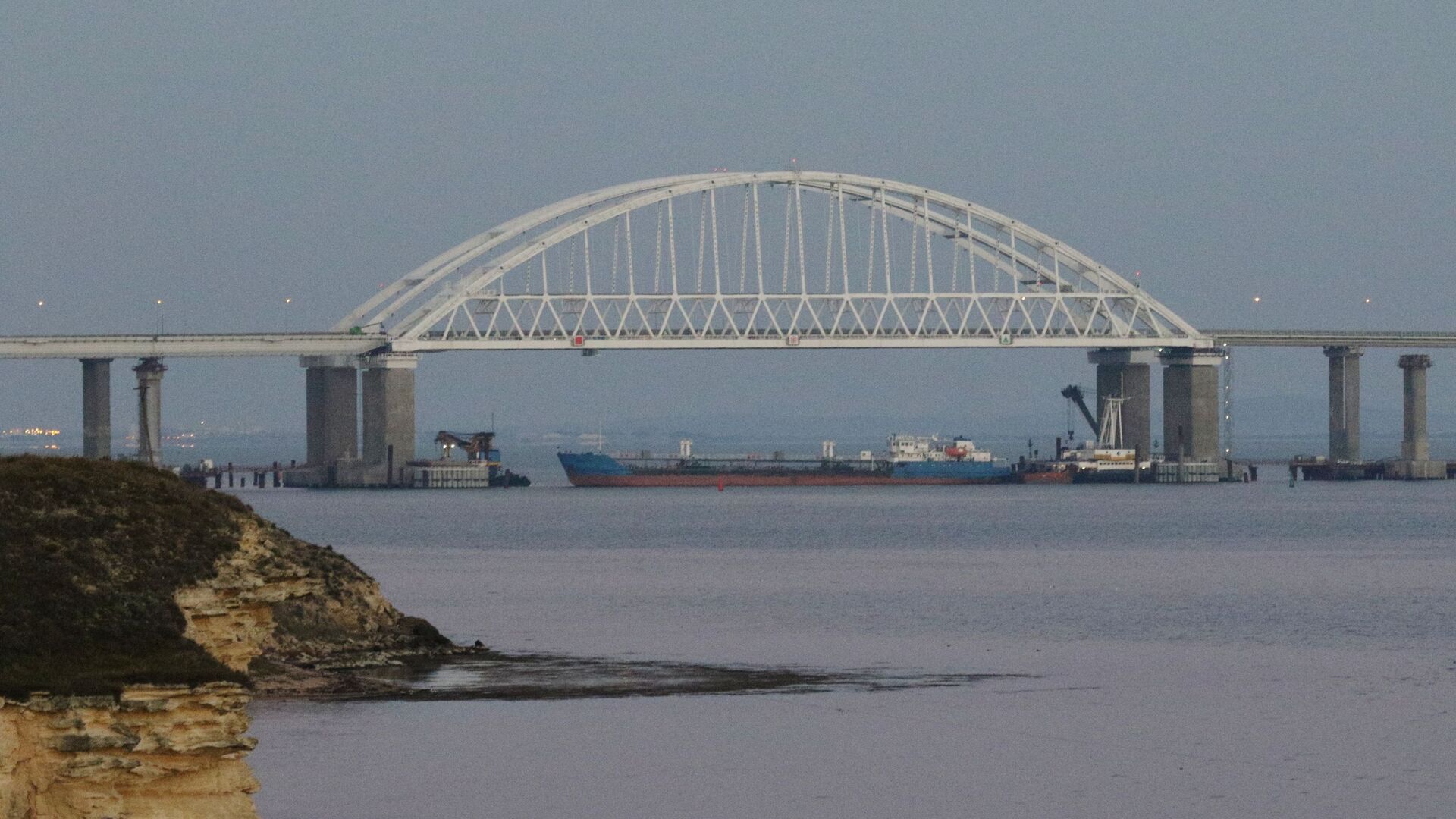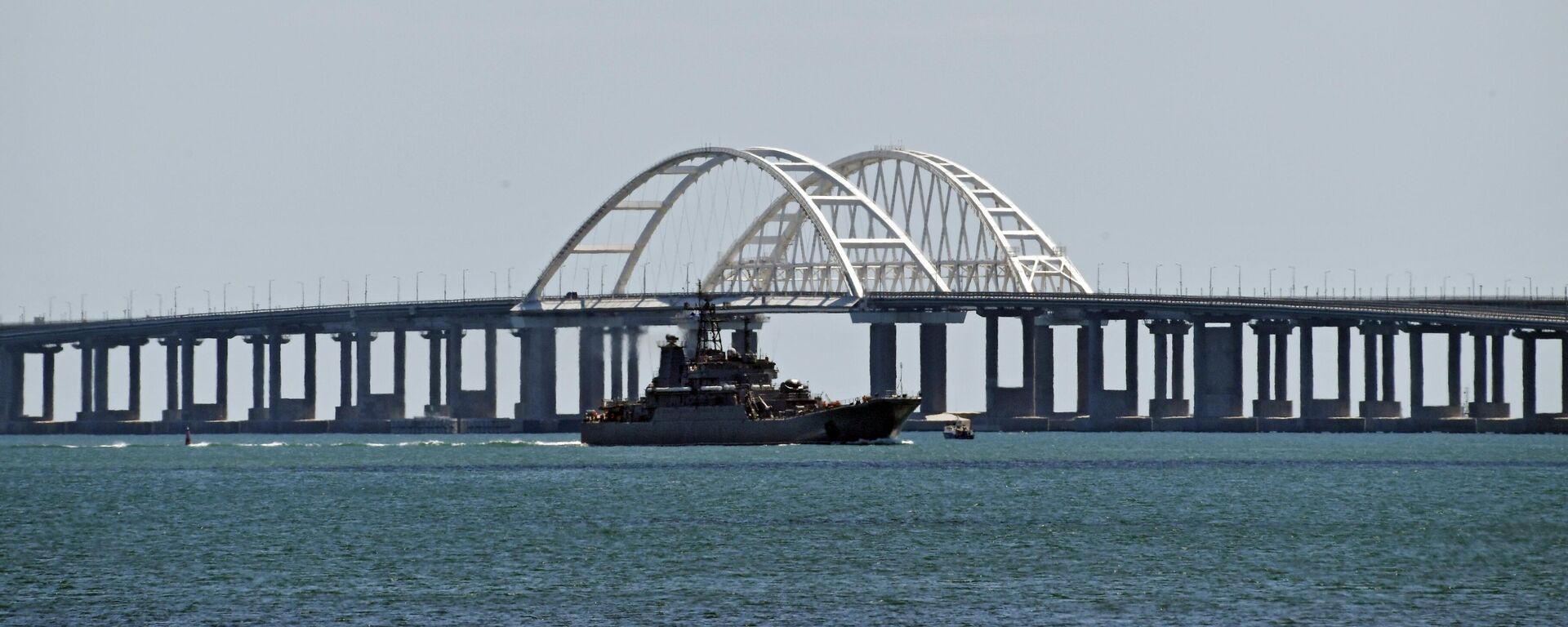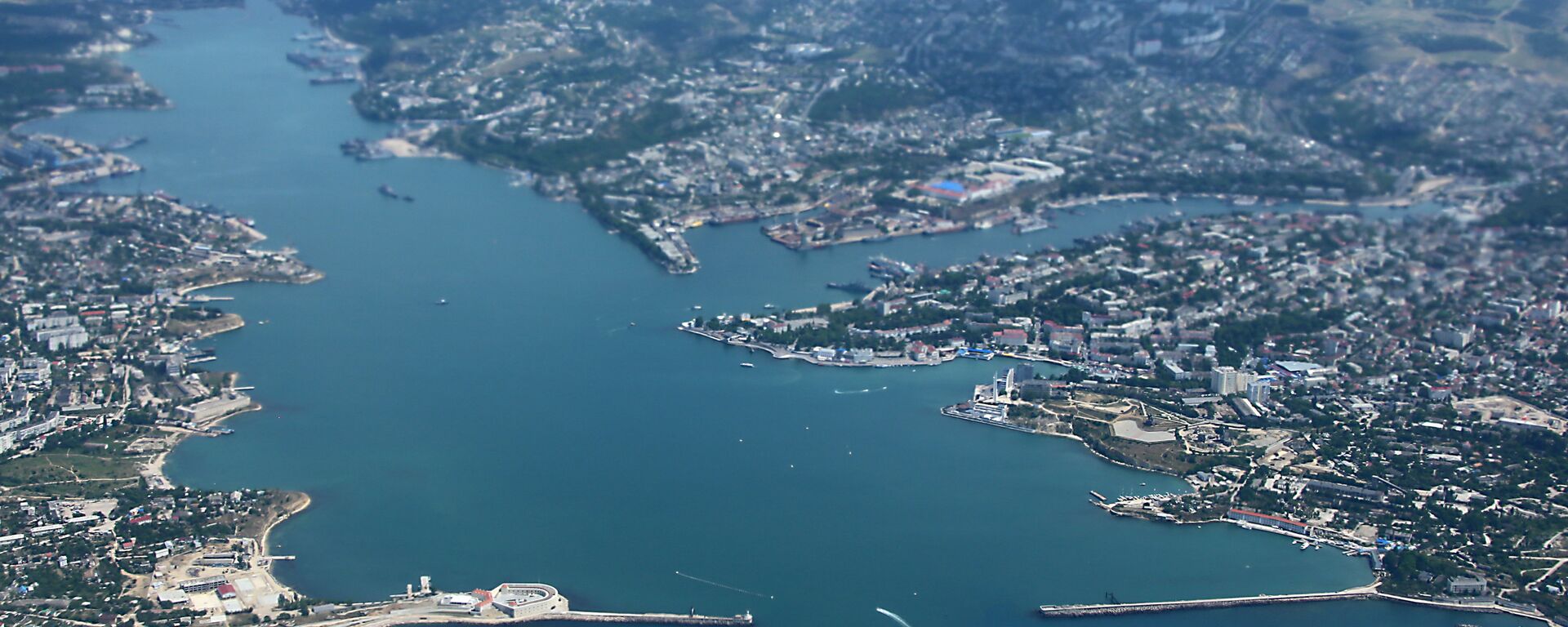Crimean Bridge Attack Part of US-Ukraine PsyOps Against Russian Civilians in Crimea
21:36 GMT 17.07.2023 (Updated: 08:37 GMT 18.07.2023)

© Sputnik / Andrej Krylov
/ Subscribe
The bombing attack on the Crimean bridge on Monday, allegedly carried out by Ukrainian naval drones, did not accidentally kill two civilians, a Russian military expert said. Rather, it was calculated to instill fear in the besieged Russian population of the region.
Vasily Dandykin, a Captain 1st Rank of the Russian Navy reserve, told Sputnik that the bridge represents a kind of “sacred” bond between Russia and Crimea, and the time when Crimea left Ukraine and rejoined Russia.
“For us, the Crimean Bridge is not just the most important economic facility, state, defense, but it is also a sacred place, it is a symbol of the Crimean Spring of 2014. This is such a thread that united us when we did not yet have a special military operation. And of course, they understand this perfectly,” he said.
The officer said the main effect of the media coverage of the attack will be disrupting tourism to Crimea during the summer holidays and “creating uncertainty” among those who live on the peninsula. He noted Kiev has threatened that “800,000 of those Russians who arrived in Crimea would definitely be expelled, just as, for example, how Germans were expelled from Poland in those territories that they got as a result of the Great Patriotic War, and they will ‘deal with the rest,’ with collaborators and so on.”
“People died, the girl is now an orphan. How many times have we seen this over the last year? In October, the attack was 'global,' with both the railway part and the automobile part being damaged. Our guys got the repair job done quickly, and afterwards the bridge’s defenses were strengthened. Since then, their attempted attacks have failed.
As a result, Dandykin concluded “it is likely that this was an advanced drone, certain in terms of carrying more explosives. Although, of course, the damage to the bridge is serious, but not the same as in October. It is likely that they used some kind of delivery vehicle - for example, one of the ships that sails the Black Sea.”
The naval officer said the situation “fully fits” with the NATO concept of psyops, or psychological operations.
“We have a hybrid war. Judging by the fact that cyber troops exist in America, and the special services are working completely in that direction, that this is intimidation of the population. Obviously, all these provocations - Bucha, etc, the shooting at Kramatorsk - are against the civilian population. This fits into the concept of psychological operations, and they work according to this scenario. These are, in principle, performers, basically. The puppeteers are sitting in the West, coordinating, sending all these drones or their components, which are assembled somewhere.”
Dandykin said the West's claims to not be involved in the bridge attack are unbelievable because, like several other operations attributed to Kiev, they are impossible for a country with such limited capabilities to carry out.
“It's easiest for them to blame everything on Ukraine. Of course, they are rare scoundrels and among them there are not mediocre scoundrels and criminals and terrorists. But to consider that the Ukrainians, or, say, the Main Intelligence Directorate of Ukraine, destroyed the two Nord Stream pipelines is already in the realm of humor. The easiest thing to do now is to blame everything on them,” he said.
“This is not the first time: a NATO center was built in Ochakovo by the Americans and the British. They trained the special forces of Ukraine, everything comes from there. And all this is interconnected. All these bells and whistles that they do are largely an English trace: MI6 is working and they also have an organization that is and has been engaged in sabotage. And, of course, tips and instructors, too. The operation that was done with the explosives on the [Crimean] bridge with the car. There are curators, everything is organized. And even in terms of surface drones - this obviously also came from there, because the British have such various developments.”
Dandykin explained that naval drones are an emerging technology that several states, including the United States and Russia, have been developing.
“This is an effective tool that is being developed. There are already large-displacement surface drones that carry weapons, in particular in America, that can travel thousands of miles. It's developing, including both surface and underwater.”
“The largest unique underwater drone is Russia’s atomic Poseidon. They call it a torpedo, but, in fact it is a drone that follows a directed trajectory, with a loaded program, and so on. All this is developing and developing very quickly. And we must be ready for this.”
He noted that new types of defense will have to be developed to counter the threat of drones, such as electronic warfare, in order to defend locations such as the Crimean Bridge or Sevastopol naval base.
“I think that the Global Hawk, the US strategic drone, which also captures and transmits information, is still constantly working in the Black Sea. This is a very expensive and advanced drone that takes off from the Mediterranean Sea, flies in neutral waters. And, of course, the satellites are constantly up above and give all the information on all points, not only on the bridge. It is likely that they received a tip and acted according to it. Intelligence passed this, of course. This action was not spontaneous, that's for sure. In my opinion, everything will be done to ensure that this does not happen again.”



